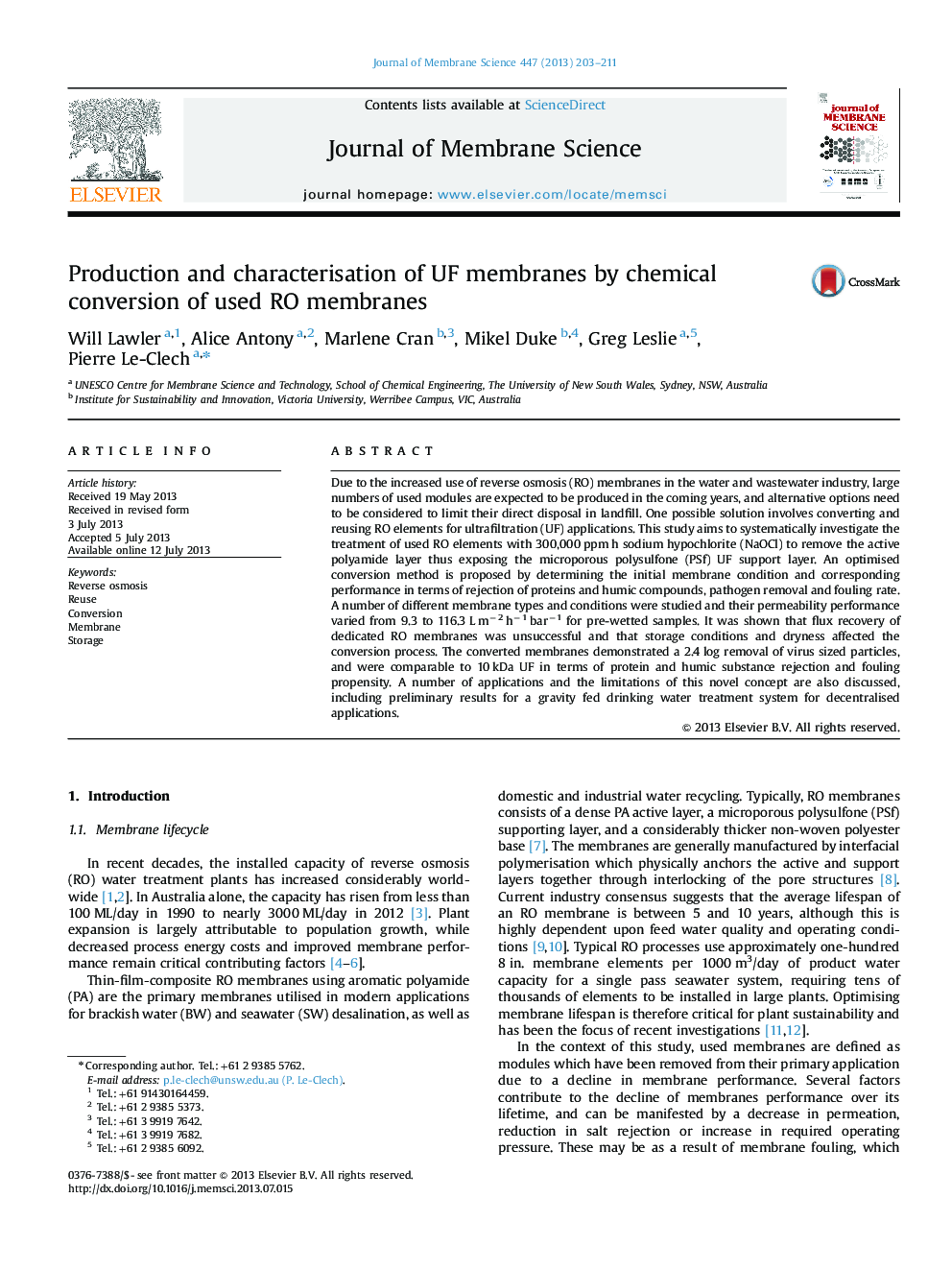| Article ID | Journal | Published Year | Pages | File Type |
|---|---|---|---|---|
| 634226 | Journal of Membrane Science | 2013 | 9 Pages |
Abstract
Due to the increased use of reverse osmosis (RO) membranes in the water and wastewater industry, large numbers of used modules are expected to be produced in the coming years, and alternative options need to be considered to limit their direct disposal in landfill. One possible solution involves converting and reusing RO elements for ultrafiltration (UF) applications. This study aims to systematically investigate the treatment of used RO elements with 300,000 ppm h sodium hypochlorite (NaOCl) to remove the active polyamide layer thus exposing the microporous polysulfone (PSf) UF support layer. An optimised conversion method is proposed by determining the initial membrane condition and corresponding performance in terms of rejection of proteins and humic compounds, pathogen removal and fouling rate. A number of different membrane types and conditions were studied and their permeability performance varied from 9.3 to 116.3 L mâ2 hâ1 barâ1 for pre-wetted samples. It was shown that flux recovery of dedicated RO membranes was unsuccessful and that storage conditions and dryness affected the conversion process. The converted membranes demonstrated a 2.4 log removal of virus sized particles, and were comparable to 10 kDa UF in terms of protein and humic substance rejection and fouling propensity. A number of applications and the limitations of this novel concept are also discussed, including preliminary results for a gravity fed drinking water treatment system for decentralised applications.
Related Topics
Physical Sciences and Engineering
Chemical Engineering
Filtration and Separation
Authors
Will Lawler, Alice Antony, Marlene Cran, Mikel Duke, Greg Leslie, Pierre Le-Clech,
